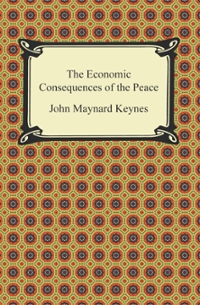7. A monopolist retires and hands her company over to her two children. The children have an argument and decide they cannot work together, and split the company into two- Firm 1 and Firm 2. Each firm can choose to produce a high level of output, or a low level of output. For each scenario, Firm I's profits are written in the lower left corner of the cells, while Firm 2's profits are written in the upper right corner of the cells. Firm 2 High Output Low Output High Output $1.600 $1,500 $1.600 $2.000 Firm 1 $2,000 Low Output $1,800 $1,500 $1,800 a. Explain why both firms producing "Low Output" gives higher profits to each firm than both firms producing "High Output". (Recall: the two firms are the only sellers in the market.) b. Explain why each firm would have an incentive to "cheat" on an agreement to keep production low.7. Based on this model collect the data and answers the given Questions (to obtain the data you can go to https://www.bnm.gov.my/msb-2021 or https://www.mof.gov.my/arkib/ekonomi/ek main.html) you can also access other sources as well The size of the sample must be N > 30 or more than 30 observations ( it is preferable if you can collect up to 40 or more observations) - you can choose either quarterly or yearly data - the data can be up to 2020. Linear Model Semilog linear model Where = Private Investment -Private fixed capital formation (Total Private Investment To GDP (PS/GDP constant price) = Government Budget deficit (the difference between government revenue and government expenses to GDP or GDP constant price ) = BDEF/GDP constant price = Inflation Rate = Government expenditure = Public Investment Total Public Investment (Government Fixed capital formation) to GDP (PA/GDP deflator or GDP constant ) = M3 to GDP (M3/GDP deflator or GDP constant ) = Real GDP (GDP deflator or GDP constant ) Answer these questions a. Estimate the regression coefficients, their standard errors, and obtain R and adjusted R for both models (Semi log linear and linear model) b. Interpret the various regression coefficients for both models (linear and semilog-linear models) c. Are the estimated partial regression coefficients individually statistically significant? Use the p value to answer the question for both estimated models d. From the ANOVA table from both models, test the hypothesis that all independent variables equal to zero. e. Compare the R? values of the linear and semilog-linear regressions. What conclusion do you draw from these computations?c. From the model above, what is the variable that allows the effect of a worker's age to depend on the gender? What is its parameter? What sign do you expect for that parameter if getting one year older is more valuable for women than men? (2pts) d. For workers of the same age and education, what is the percentage earning gap between male and female?(Ipt) e. If f, > 0, then does the earning gap between male and female worker get larger for older people or for younger people? (2pts) E. Provide a correct interpretation for the coefficient of the variable age female (1pt) g. Provide a reason for the presence of the variable female edu in this model i.e what can this variable in this model allow us to investigate? (Ipt) Ill. (15pts) You are given the following economic model: log(wage) =0.18+0.093edi + 0.044 exp+0.043 female -0.016edu. female -0.010exp. female - 0.00068 exp Sid errors (0.132) (0.009) (0.005) (0.196) (0.014) (0.003) (0.0001) 1 526 R-Squared - 0.4160 10612 With all the variables described as follows: log wage) = log of average hourly wage; female is a dummy variable equal to I if the observed person is a female, and 0 if male; edu female is an interaction variable equal to education female; edu is the number of years of schooling: exp is the number of years of experience exp.female is an interaction variable equal to experience female exp - experience "experience. a. Is the parameter of the variable exp statistically significant at 5%? (Ipt) b. Provide a possible reason for the presence of the variable exp* in the model estimated above (Ipt) c. What is the estimated return to an additional year of experience for a female worker? For a male worker? (2pts) d. What is the optimal number of experience years for a female worker? For a male worker? (2pts) e. Calculate the estimated effect of the 5" year of experience on a female's wage, and on a male's wage. (2pts). f. From the estimated equation above, provide an appropriate interpretation for each coefficient associated to the following variables: female, education, and female. edu? (3pts) g. Is education more valuable for male or for female workers? What about experience? (1 pt) h. If a male and a female have 10 years of experience each, how many years of education would it take for their wages to be the same? (1pt) In order to test whether gender does significantly affect the wage earned by workers, the following restricted model has been estimated. log(wage) = 0.128 +0.090edu + 0.041exp-0.0007 exp' Sid errors (0.106) (0.0075) (0.0052) (0.00012) 1=526 R-Squared = 0.3003 i. At 5%, test whether the gender is a statistically significant in explaining workers' wages. State clearly your null and alternative hypothesis, and explain the implications of your test conclusion. (2pts)1 Franchise Fee and Efficiency Consider an upstream monopoly firm M producing a good with a cost function C(Q) = }cQ2. This good is sold at a price p to two downstream retailers, RI and RI, who sell the good to final consumers at a price p. This price p is given by the inverse demand function p = 1 - q1 - 92 where qi are q2 are the quantities sold respectively by RI and R2, with Q = q1 + 92. 1. For given p (and assuming p










